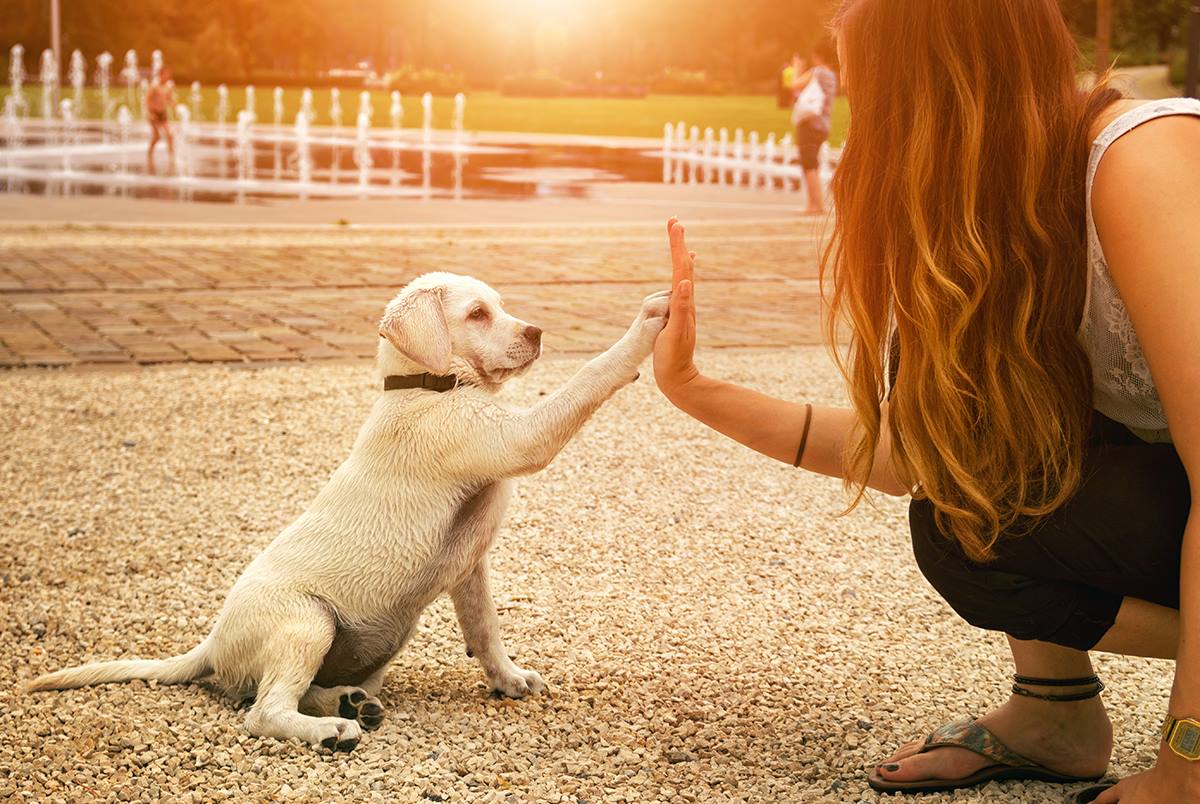We all want a well-behaved dog in our house but how does that happen? In the desire to train our favorite canine family members one approach has proven to work above all others: positive reinforcement. This method focuses on rewarding desirable behaviors rather than punishing undesirable ones.
The benefits of positive reinforcement are abundant, and when paired with the right behavior reinforcement tools, it becomes a powerful tool for effective dog training and for building a better relationship with your companion. Fun is a powerful learning tool!
The main element to consider is that positive reinforcement fosters is a deep sense of trust and companionship between dogs and their owners. Dogs thrive in an environment where they feel valued and understood, leading to a stronger bond that enhances the overall training experience. By rewarding desired behaviors with treats, praise or playtime, dogs quickly learn what is expected of them. This method makes learning enjoyable for dogs, motivating them to repeat the behaviors that earn them rewards. Such positive reinforcement boosts a dog's self-confidence as they experience success and accomplishment through their learned behaviors. A confident dog is more likely to tackle new challenges and adapt to different situations.
Unlike negative training methods, positive reinforcement creates a stress-free and fear-free learning environment. Dogs are more likely to thrive when they are not subjected to negativity, leading to a happier and healthier pet. Behaviors learned through positive reinforcement tend to have longer-lasting effects. Dogs learn to associate positive experiences with specific actions, making them more likely to continue displaying those behaviors over time.
I had a great dog, Cody, an affable and sometimes silly German Shepherd, who did very well with verbal praise, but would also never turn down a yummy treat when offered. On of the things I trained him to do early on was to make sure to know where I was at all times. To do this, as a puppy we would take walks, and when I saw he was wandering a little I would hide on him. When he looked up and didn't see me he would start looking for me, and I would come out from hiding and praise him strongly. Over time this ingrained in him the desire to know where I was and stick close so he wouldn't lose me. This proved to be very helpful in keeping him safe while we would walk in areas where running off on his own could cause problems if there were cars driving around. Once on a walk we came across a muskrat, and because of the training we did he stuck by me rather than investigate, so that probably saved me an expensive vet bill!
Types of Positive Training Techniques
Food rewards are among the most effective tools for positive reinforcement. High-value treats provide immediate gratification for dogs, reinforcing the connection between the behavior and the reward.
Interactive play sessions with toys can be highly rewarding for dogs, especially for behaviors that require physical activity. Throwing a ball after a successful command execution combines exercise with positive reinforcement. Interactive play sessions with toys can be highly rewarding for dogs, especially for behaviors that require physical activity. Throwing a ball or letting them interact with a favorite toy after a successful command execution combines exercise with positive reinforcement.
Physical touch in the form of belly rubs, head pats, and cuddles can be a significant reward for dogs. Many dogs thrive on affectionate interactions with their owners and consider them highly rewarding. So give those doggos lots of pats when they are doing the good things you want them to!
Clicker training can be highly effective as a positive training tool. A clicker produces a distinct sound that signifies a correct behavior, allowing for precise timing in reinforcement. Dogs quickly learn to associate the click with a forthcoming reward, facilitating efficient training.
Lastly, verbal praise can be highly rewarding for our canine companions. Dogs are very attuned to their owner's voice, making verbal praise a powerful reinforcement tool. Using an enthusiastic and cheerful tone, owners can convey their approval and delight when their dog exhibits desired behaviors.
Positive reinforcement is effective and is a compassionate form of dog training. Its benefits are far-reaching, from building trust and enhancing confidence to creating a stress-free learning environment. As more dog owners embrace this approach, the world of training becomes brighter, more enjoyable, and successful for all involved.



